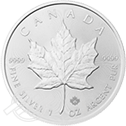Gold IRA Tax Rules: How is Gold Taxed in an IRA
First things first: Gold IRA tax rules and regulations are identical to those that govern the traditional IRA you may already own or are familiar with.
Understanding the Gold IRA tax rules for 2024 and beyond is essential for investors. Otherwise, you might incur costly penalties and expensive tax consequences.
Gold IRAs are taxable, and the type of IRA you choose determines how and when the IRS taxes your account. The three different types of Gold IRAs are:
- Traditional IRA
- Roth IRA
- Simplified employee pension (SEP)
Each one has its own set of rules governing contributions, withdrawals, and taxation. Based on your income, investment goals, and employment, you’ll decide which type of IRA makes sense for you.
If you have questions, consult your certified public accountant (CPA) or tax professional for more guidance.
Gold IRA Tax Rules
The Internal Revenue Service (IRS) determines the rules for IRAs.
It dictates eligibility for bars and coins, the parameters for contributing or withdrawing those bars and coins, and how to store them.
By enforcing high standards for precious metals IRAs, these rules effectively help protect the long-term viability of your IRA investment. They also make investing in a Gold IRA (and Silver IRA) one of the safest ways to own precious metals.
So, what does the IRS say about physical metals purchases? Let’s look at it in the context of funding your metals purchase with your existing retirement assets (potentially as a rollover).
Generally, IRA investments in metals or coins count as acquiring collectible items. They receive the same treatment as buying art or baseball cards. That also makes them a taxable distribution from an existing IRA followed by a purchase of the coin or metal by its owner.
The bad news is that collectibles often have an unfavorable tax rate. If you buy gold and hold it for less than a year before selling it, you get the same tax treatment as ordinary income or short-term capital gains. Alternatively, you can hold on to it for over a year and then sell it. However, as a collectible, gold doesn’t have the status of long-term capital gains.
The good news? There’s a critical statutory exception.
IRA owners can invest in gold, silver, and platinum coins and bullion that meet specific purity standards. Those assets, however, must remain in the physical possession of an IRA trustee or custodian rather than you.
Use Approved Bars and Coins
The IRS’s strict guidelines for the quality, purity, and origin of IRA-approved bars and coins are as follows:
To be accepted and stored in an IRA, gold coins must be:
- Manufactured by a government mint
- New, uncirculated, and in perfect physical condition
- 99.5% pure
- Proof coins must be in original packaging and include certificates of authenticity.
Gold bars and rounds must also be 99.5% pure and come from manufacturers, assayers, and refiners listed on the Commodities Exchange (COMEX) and other approved exchanges.
Gold jewelry, scrap gold, pirate ship coins, and even some other coins—such as South African Krugerrands—do not meet the ownership qualifications for IRA inclusion.
Understand Contribution and Withdrawal Limits
Because Gold IRAs work like typical IRAs, their tax rules and regulations are the same.
You can contribute to a Gold IRA in one of three ways:
- Rollovers
- Transfers
- Direct contributions
An IRA rollover occurs when you convert an eligible 401(k) or similar retirement savings plan into a Gold IRA. If you own an IRA or 401(k) and are age 59 ½, you can convert that plan—tax- and penalty-free—into an IRA.
A transfer occurs when you convert an existing IRA into a self-directed one, allowing you to own physical gold. There is no age restriction or employment requirement with a transfer. You move assets from one IRA into another IRA and keep the benefits that you already have.
Funds are typically transferred directly from your old account into your new account. Since you are not withdrawing the funds, a direct transfer has no tax implications.
Direct contributions add cash (up to yearly limits) to your account. Each type of IRA allows direct contributions, but each has its own limits.
In addition to Gold IRA contribution limits, each type of IRA has specific rules about whether those contributions are tax-deductible. They also include provisions to compel you to take distributions. The rules for each type of IRA for the 2024 tax year are as follows:
| Type of IRA | Maximum contribution per year | Penalty-free withdrawals? | Tax deductible | Required minimum distributions | Are withdrawals taxed? |
| Traditional IRA | $7,000 (under 50)
$8,000 (50 and up) |
Age 59 ½
|
Yes | Age 73 | Yes |
| Roth IRA | $7,000 (under 50)
$8,000 (50 and up) |
Age 59 ½
|
No | No | No |
| SEP IRA | $69,000 (or 25% of income) | Age 59 ½
|
Yes | Age 73 | Yes |
Because Roth IRAs are made with after-tax funds, they’re not tax deductible. For this same reason, you are not required to make minimum distributions at any point. Compare that to traditional and SEP IRAs, whose funds are tax-deductible in the year they’re made but are taxed as income upon distribution.
Gold IRA Storage Rules
The IRS doesn’t just have rules around what kind of precious metals you can store in a gold IRA. It also provides strict guidelines for where you can store those items.
The IRS dictates that Gold IRA owners store their precious metals in a neutral, guarded, and insured facility. These depositories have stringent standards for accurate accounting, reporting procedures, safety, security, and insurance.
There are many approved depositories across the United States, including the:
- Delaware Depository
- Brinks Depository
- JPMorgan Chase Depository
- HSBC Depository
Most investors choose the depository closest to them, as the facilities typically allow for arranged visits. You can make an appointment, have your metals brought to you, hold them in your hands, and safely return them to the vault.
Other Gold IRA Tax Rules to Know
Provided that you follow the rules for Gold IRA investment, you’ll also want to keep the following items in mind:
- Traditional IRAs may offer higher after-tax returns than Roth IRAs.
- Taxes on gains from Gold IRA investments are only due once you cash out. They’re taxed the same as ordinary income, with a marginal tax rate.
- Gold IRAs are subject to additional taxes and fees, including a 10% withdrawal penalty for cashing in before age 59 ½.
- The collectible tax rate of 28% doesn’t apply to IRA investments in gold. Instead, a marginal tax rate applies. On the downside, high-income tax brackets may pay more than 28% in taxes.
- Your income bracket determines your taxes due. The amount you withdraw from the IRA is added to gross income and taxed accordingly.
- Investments that generate losses are not deductible on tax filings.
- You must take distributions from traditional and SEP IRAs by age 73.
Learn More About Gold IRAs and Their Tax Implications
Clarity around Gold IRA tax rules and regulations is critical. The IRS enacts these standards to help protect your investment. Working within these parameters helps avoid costly penalties and tax consequences.
Advantage Gold has been educating and guiding clients like you for the past decade.
As the highest-rated precious metals firm, we pride ourselves on explaining the process and showing you how easy it is to own precious metals.
Contact us today or tell us how to contact you, and one of our trained account executives will be in touch.
Tags: gold ira tax rules and regulations, gold ira tax rules for 2023, gold roth ira rules



